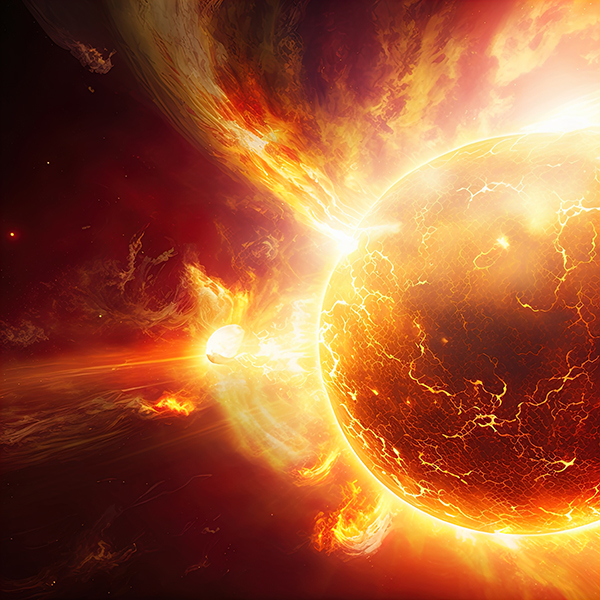 Parler
Parler Gab
Gab
Prominence appears to be linked to a shift in the sun's magnetic field
Researchers believe the phenomena have to do with the switch of the sun's magnetic field and they think that the polar region is very crucial in generating the magnetic field. However, they do not know what the exact cause is. Scientists have frequently checked filaments break away from this pole-embracing plasma hedgerow, but they have yet to examine it from such a polar whirlwind up to now. McIntosh added that it is an area that cannot be observed first hand, as scientists can only watch the Sun from the ecliptic plane, or what the planets orbit. "We can only observe the sun from the ecliptic plane," McIntosh said, pertaining to the plane in which planets orbit. Meanwhile, the ongoing Solar Orbiter mission of the European Space Agency (ESA) could give some understanding and may shed some light on this unusual phenomenon in the coming years. The ESA Solar Orbiter mission, which is taking photos of the Sun from within the orbit of Mercury, will have its orbit tilted by up to 33 degrees. McIntosh believes that might not be enough to figure out the mystery of the polar vortex and scientists could require another mission to fully comprehend what is occurring at the sun. Follow Space.news for more news about the sun's solar activities. Watch this video that explains why scientists are worried about the sun's corona. This video is from the END TIME NEWS channel on Brighteon.com.More related stories:
The sun could blast Earth with a solar 'superflare' 1,000 times larger than mankind has ever seen. NASA says the solar flare that caused a radio blackout last September was the biggest flare in a decade. Lost in space: Solar storm destroys 38 Starlink satellites, costing Elon Musk’s company tens of millions in losses. Mysterious shock wave cracks Earth’s magnetosphere – exposing the planet to dangerous space radiation for hours. Sun erupting non-stop this month, giant explosions seen from its far side. Sources include: Vice.com Space.com Brighteon.comScientists discover HIDDEN PHARMACY in limestone caves
By Kevin Hughes // Share
The science is undeniable: Face masks do NOT stop covid transmission
By Ethan Huff // Share
Unmasking COVID claims: Scientific review challenges claim that masks reduced COVID transmissions
By News Editors // Share
Common chemicals in shampoo and soap found to increase diabetes risk in women
By Zoey Sky // Share
Governments continue to obscure COVID-19 vaccine data amid rising concerns over excess deaths
By patricklewis // Share
Tech giant Microsoft backs EXTINCTION with its support of carbon capture programs
By ramontomeydw // Share
Germany to resume arms exports to Israel despite repeated ceasefire violations
By isabelle // Share










